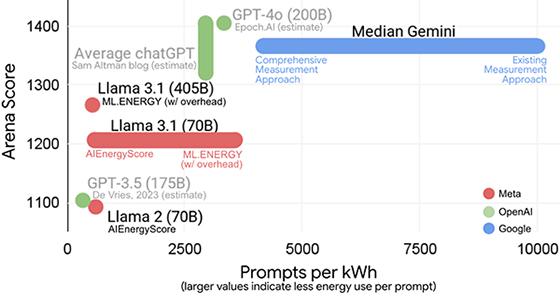
Power-thirsty data centers are dominating the news cycle,
with Google, Meta, Microsoft, and others spending billions to support artificial intelligence (AI).
Advertisers concerned about using too much energy or harming the environment through searches
or media buys may want to consider another way to connect with potential and existing customers.
The median energy use of one text prompt on Google Gemini is equivalent to watching TV for less
than nine seconds and consumes five drops of water, the company said in a new research paper, and it emits 0.03 grams of carbon dioxide.
Google executives are proud of the findings from the
research because the figures are substantially lower than many public estimates. But the company can still do better.
This week Google released research and its methodology on how it
determined the amount of electricity and water a full-stack AI infrastructure requires. It includes everything from overhead to energy used by idle chips -- even ways to cool the equipment to ensure
they do not overheat.
advertisement
advertisement
Software efficiencies and clean energy have lowered the median energy consumption of a Gemini Apps text prompt by 33x during the last year and lowered CO2 by 44x, the
company wrote in the post.
During the past 12 months, the energy and total carbon footprint of the median Gemini apps text prompt dropped by 33x and 44x, respectively, while delivering
higher-quality responses, the company wrote.
"We are not just measuring the power from chips -- we also look at used TPUs and GPUs in Google's system," said Savannah Goodman, head of Advanced
Energy Labs at Google, in a video. "The energy consumption, carbon emissions and water consumptions were a lot lower than what he have been seeing in some public estimates."
The research paper, released Thursday, also suggests that despite all this progress in AI, the industry lacks first-party data from the largest AI model providers, and
that needs to change.
Lack of a consensus has led to published estimates for similar AI tasks, and a lack of agreement regarding methodologies may have contributed to a
lack of first-party data when it is needed most.
"Google has a unique perspective on the operational realities of maintaining a large-scale, globally-distributed AI production fleet,
and serving software products at scale — such as web search," according to the paper.
The paper also went on to describe ways to characterize and optimize "environmental impact of AI
model serving requires a comprehensive view of energy consumption—including the power drawn by the host machine's CPU and DRAM, the significant energy consumed by idle systems provisioned for
reliability an low latency, and the full data center overhead as captured by the Power Usage Effectiveness (PUE) metric."